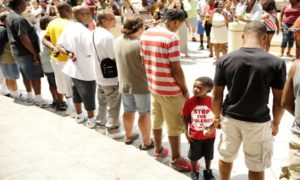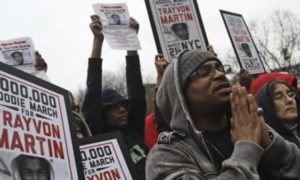Featured
The Prosecution’s Closing Arguments

“A teenager is dead. He is dead through no fault of his own. He is dead because another man made assumptions…and, he acted on those assumptions. And, unfortunately, because those assumptions were wrong, Trayvon Martin no longer walks on this earth.”
Prosecuting Attorney Bernie de la Rionda began his closing argument with those sobering statements. De la Rionda told jurors the events that led up to the shooting of Trayvon Martin began months before February 26, 2012. He reminded jurors that George Zimmerman’s call to the 911 dispatcher.
“This neighborhood had had a lot of crimes. My wife saw our neighborhood get broken into, and my wife got scared…I decided to form a neighborhood watch in my neighborhood.”
De la Rionda said Zimmerman’s actions to serve his community were not terrible or wrong. But, is this case they “led to the death of an innocent 17 year-old boy. He profiled him as a criminal. He assumed certain things, that Trayvon Martin was up to no good, and that is what led to his death.” But, he “was there legally. What was his crime? He bought Skittles. And he had $40.15 in his pockets. He was wearing a photo button and he was speaking to a girl in Miami. He was minding his own business.”
Second degree murder requires ill will or malice on the part of the defendant. De la Rionda played the 911 tape where Zimmerman is heard saying, “These a**holes always get away.” He continued with the prosecution’s argument that Zimmerman was frustrated with the break-ins in the area, saying Zimmerman “followed him…he was tired of criminals. He went over the line. And, instead of waiting for the police to come and do their job he wanted to make sure that Trayvon Martin didn’t get out of the neighborhood.”
Zimmerman is claiming self-defense. De la Rionda explained, “This is not like the defendant was walking home, and some guy just came out and started beating him up. Who was more scared? The kid who was going home and was being followed by this man. Trayvon can’t come into this courtroom and tell you he was scared, and is because of the actions of one person, the defendant.” He continued, saying Zimmerman never identified himself as a neighborhood watch. Del la Rionda told jurors, “He didin’t say…hold on, I’m with the neighborhood watch. Can I help you with something? Are you lost?”
Prosecutors have argued that the central question in the case is who started the incident. He pointed to the testimony from Trayvon Martin’s friend, Rachel Jeantel, who was on the phone with the teenager in the moments before he was shot. Jeantel testified that Martin told her a man was watching him and the man started following him. De la Rionda reminded the jurors of Jeantel’s testimony. “She’s not the most sophisticated person, but she’s a human being. But, did she speak the truth? Her use of colorful language doesn’t mean her testimony is less credible,” he said.
De la Rionda moved on to inconsistencies in Zimmerman’s statements about the night. He acknowledged there was a fight. But, “why did it occur?” De la Rionda pointed to the witnesses who heard a struggle in the neighborhood who testified seeing Zimmerman atop Trayvon. He mentioned neighbor John Good who said it was too dark to see if punches were being thrown. And, he references Zimmerman’s 18 months of training in mixed martial arts, adding that the defense will want you to see Zimmerman as “just a pudgy, overweight” man. He also raised the question involving Zimmerman’s claims that he feared for his life, asking “Why isn’t his jacket not torn up?” “Why wasn’t there blood on Trayvon’s hands?”
De la Rionda highlighted inconsistencies in Zimmerman’s recorded and videotaped statements with police. Zimmerman told police Martin had his hand over Zimmerman’s mouth and was holding Zimmerman’s nose when Martin started reaching for his gun. De la Rionda said, “He (Martin) must have had 10 hands out there that night. Was it his third hand that reached for the gun?”
Occasionally, De la Rionda’s voice became gruff with emotion as he talked about Trayvon’s death. But, he pressed on with Zimmerman’s inconsistencies. He pointed to Zimmerman’s jacket, emphasizing the lack of grass and tears. Zimmerman stated that Martin beat him repeatedly and slammed his head over and over into the concrete. Photos of the two lacerations on the back of Zimmerman’s head was shown.
“He’s trying to make up one lie after another,” De la Rionda said. “He’s got that legal training, and he’s aware of what he’s got to say,” De la Rionda said, referencing the college coursework Zimmerman took as part of the criminal justice degree he was pursuing.
De la Rionda continued playing the recorded statements, stopping and starting them to call attention to inconsistencies. In the videotaped re-enactment Zimmerman is heard identifying a street in the neighborhood, which contradicts Zimmerman’s earlier statements that he didn’t know the name of the streets and that’s why he had gotten out of the car that night. De la Rionda said Zimmerman needed a justification for getting out of his car because he couldn’t admit he followed Martin. “He’s lived in this neighborhood for years, and there were only three streets,” De la Rionda said.
De la Rionda told jurors Zimmerman was “pretty fit” the night he shot and killed Trayvon Martin. He implored the jury to compare his size to Martin that night, calling into question the assessment from a defense witness that Zimmerman was “soft.”
The lead prosecuting attorney underscored that non of Martin’s DNA was found on Zimmerman’s gun although Zimmerman said Martin reached for his gun, and Zimmerman’s friend, Mark Osterman, wrote a book in which he claimed Martin grabbed the gun.
Zimmerman had options that night, he could have stayed in his car, identified himself, but the victim did not.
De la Rionda urged jurors to return “a verdict that speaks the truth, a verdict that is just.”

-
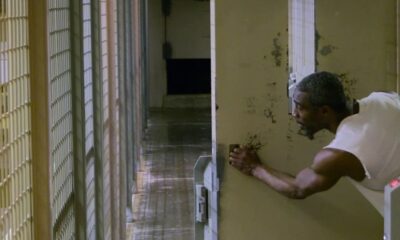
 Featured12 months ago
Featured12 months agoArkansas Sheriff Who Approved Netflix Series Says He Stayed ‘In His Lane’
-
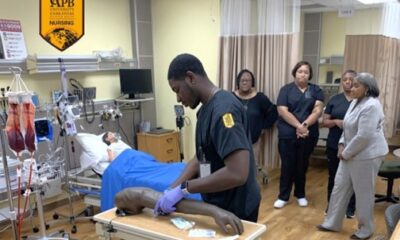
 HBCUS12 months ago
HBCUS12 months agoSenator Boozman Delivers $15 Million to Construct New UAPB Nursing Building
-
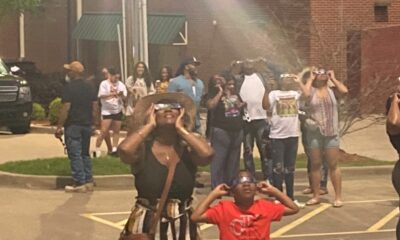
 News12 months ago
News12 months agoMillions In the Path of The Total Solar Eclipse Witnessed Highly Anticipated Celestial Display
-

 Featured9 months ago
Featured9 months agoCalifornia Is the First State to Create A Public Alert for Missing Black Youth
-

 Featured9 months ago
Featured9 months agoAfrican American Leaders Stay the Course Amid Calls for President Biden To Bow Out of Race
-

 Featured9 months ago
Featured9 months agoThe Debate Fallout Lands on Both Candidates


